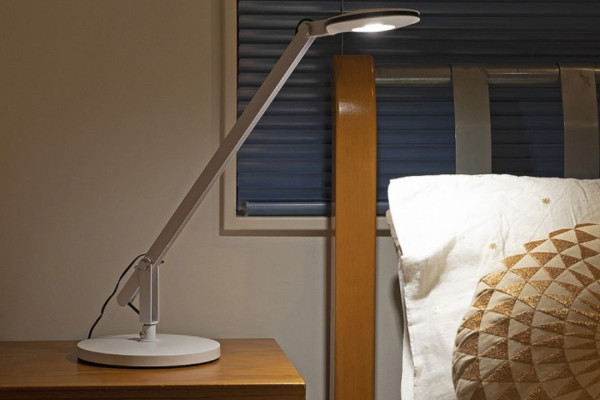LUMENS: WHAT ARE THEY AND HOW MUCH DO I NEED?
Most people struggle with having a dimly lit space to work with. Whether that's in the office, bathroom or kitchen, having the right amount of light output is essential for having a comfortable and functional environment.
There is no one size fit's all when it comes to Lumens and every room of the house. So let's find out more about this lighting terminology below...

What are Lumens?
As the growth in popularity of LED technology, it has become more important to understand Lumens as a way of measuring light.
Lumens are a measurement of light output. We use lumens to determine the amount of light visible to the human eye. Essentially, if you want to understand the light output of a bulb (or lighting fixture), you look for the number of lumens the bulb can provide.
As a general rule for understanding lumens, the higher the unit of lumens, the brighter the light will be.
Lumens are found to be a more accurate way of measuring the quantity of light. Previously, Watts was the main measure, which focuses more on the amount of energy a bulb uses.
What is Lux?
While Lumens represents the total amount of light emitted by the source, Lux is a measurement of the lights intensity on a flat surface area - such as a dining table or wall.
One Lux is equal to one lumen per square metre. So we can use Lumens as a general guide to help us calculate how many fittings or bulbs we may need to effectively light a room.
Where can I see how many Lumens a light has?
Check the packaging/box your light bulb or fitting is in. Lumens will often be clearly displayed to make it easier for users to chose the right bulb for their space.
You can also find out lumens for our Superlux products on our website. Check the 'Technical Data' column on our product pages to find a light or bulbs 'Total Lumen Output'.
How many Lumens do I need?
In order to figure out how many Lumens are needed to effectively light a space, there are a couple of key things to consider:
- Room Size = As Lux is related to area (and we know one Lux is equal to one Lumen per metre squared), you should start by working out the size of the area you wish to light.
- Room & Purpose = Every room in your home does not require the same amount of light. For example, bathrooms and kitchens are often where finer/more detailed tasks take place, so these spaces should have a higher amount of Lumens than say, a reading nook or dining room.
Other things to consider...
- Not all the lumens have to come from one light source. Most rooms around the home now are multi-functional. So consider having additional light sources in the space that can aid in some of the rooms other functions.
- For example, consider table or floor lamps with lower lumens in Living Rooms that can be used as a reading light or for watching TV.
- The same applies for kitchen spaces where perhaps more focused work takes place - such as chopping vegetables - consider task lighting (like under cupboard strip lights) with higher lumens to help with visability while chopping when the natural light begins to fade.
Here is a general guide to Lumens for different spaces around the home:
| Space | Lumens Per Metre Squared |
| General Kitchen Lighting | 30-40 |
| Kitchen Stove/Sink/Chopping Area | 70-80 |
| Dining Room | 30-40 |
| Bedrooms | 10-20 |
| Bathrooms | 70-80 |
| Hallways | 5-10 |
| Living Room | 40-50 |
| Home Office | 60-80 |
| Garage | 60-80 |
Navigation
- Outdoor Lights Materials and Finishes Guide
- Lamps – Light Sources
- Control Gear Information & Trouble Shooting
- IP Rating Chart
- Declaration of Compliance with Standards
- Bulb Terminology and Identification
- 12Volt DC Supply LED Strip & Module Planning
- Advantages of the Superlux LL and LLED Garden Lighting system
- 12 Volt Garden Lights
- The Different Purposes Of Lighting
- Lighting For Different Areas
- A Guide To Installing Lights
- Energy Efficient Lighting
- Colour Temperature Guide
- CRI: Colour Rendering Index
- Uniform Downlight Spacing Formula
- Downlight Classification Guide
- Lumens: What Are They And How Much Do I Need?
- Lux: What is it And How Much Do I Need?
- Globes With 60mmØ Fitter Included
- How Do Sensor Lights Work?
- What To Do If I Have Moisture Build Up In My Light Fixture?
- Latest News
